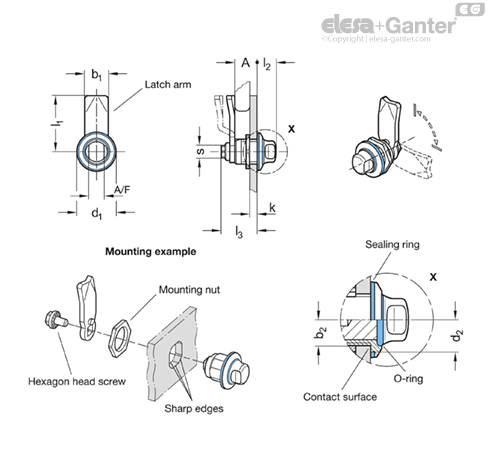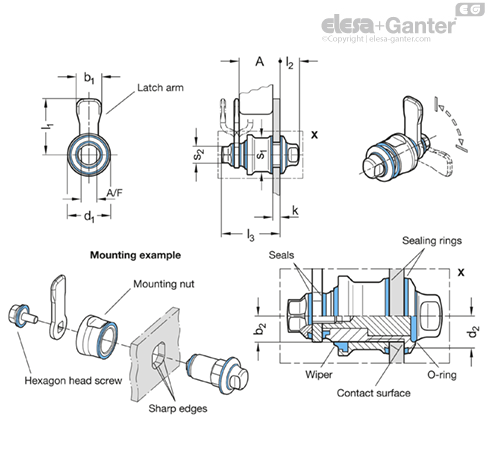GN 1150
Stainless Steel Latches
Stainless Steel, Operating Side in Hygienic Design (Front Hygiene) / Operating and Latch Arm Side in Hygienic Design (Full Hygiene)

GN 1150-FH
Stainless Steel Latches
Operating side in Hygienic Design (front hygiene)

GN 1150-VH
Stainless Steel Latches
Operating and latch arm side in Hygienic Design (full hygiene)
GN 1150-FH
Stainless Steel Latches
Operating side in Hygienic Design (front hygiene)



Type
- Type SW: With two spanner flats
Coding
- Version FH: Operating side in Hygienic Design (front hygiene)
- Version VH: Operating and latch arm side in Hygienic Design (full hygiene)
Lock housing
Stainless steel AISI 316L
Latch arm
Stainless steel
- AISI 304 for d1 = 22 (front hygiene)
- AISI 316L for d1 = 30 (front hygiene)
- AISI 316 (full hygiene)
Seals (full hygiene)
Blue, FDA compliant
Temperature resistant -40 °C to +110 °C
Sealing ring / O-ring
EPDM E
- Blue, FDA compliant (front hygiene)
- Temperature resistant -40 °C to +120 °C
- Hardness 85 ±5 Shore A (Sealing ring)
- Hardness 70 ±5 Shore A (O-ring)
- Other Seals / Wiper (full hygiene) TPU, Hardness 95 ±5 Shore A
Other parts
Stainless steel AISI 316L
All moving parts lubricated with FDA compliant special grease
Protection class IP 66
LOOKING FOR ALUMINIUM PROFILES:
Feeling overwhelmed with what product to choose?
Don’t delay, give OIC a call and talk to us about your industrial application. Our aim is to help your business choose the right Elesa+Ganter element for the function you need. Whether you need to clamp, close, connect, control, level, manoeuvre, measure or set. OIC has an Elesa+Ganter machine element to fit your need.
We want to find out about your industrial application need and where we can help. Our contact details are below.
